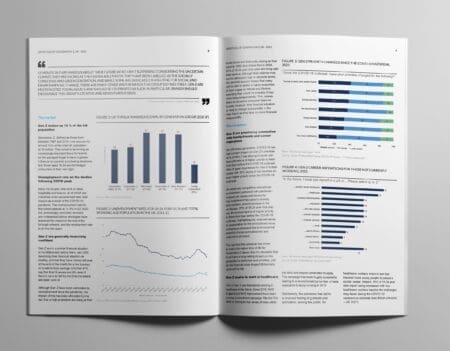Believe it or not, Amazon Prime Day has only been around since 2015 and yet, within a few short years the retailer-created “holiday” sales event has become a mid-July tradition synonymous with big savings. Each year it seems Amazon outdoes itself and this year was no exception. The event ran for a full two days for the first time ever and included extra surprises like a Prime Day concert leading up to the event and the launch of a new beauty line with Lady Gaga, available for pre-order on the first day.
Amazon has undoubtedly experienced massive success with Prime Day and has already claimed this year’s event was the largest shopping event yet, reportedly selling more than the e-commerce giant sold on Black Friday and Cyber Monday in 2018, overall. However, success from Prime Day isn’t exclusive to Amazon; its impact has a halo effect, benefiting competitors that have piggybacked on the shopping holiday.
Prime Day’s impact on Amazon
This year’s event was the largest and lengthiest, reaching 18 countries for two days during which Amazon reportedly sold more than 175 million items. Prime Day’s strategy of spotlighting its own brands and products appears to have paid off, with the retailer claiming to have sold more Amazon devices during the two-day event than it has ever before. It also gave Amazon the chance to highlight its robust offerings in a number of other categories, especially those where it wants to establish itself as a destination, such as fashion. Prime Day deals included products from Amazon’s external partners, such as Adidas and Levi’s, as well as Amazon’s private brand clothing like its Core 10 activewear.
With membership being the biggest barrier to participation, Amazon relishes the opportunity to prove to both current members and non-Prime members that its $119 annual membership is worth it. Early indications point to positives with Amazon allegedly added more new members to the program on July 15th than ever before, while more than 100 million consumers are already members worldwide, according to Amazon.
Prime Day’s impact on competitors

Consumer-to-consumer e-commerce company eBay took a more direct, albeit provocative, approach running a “crash” sale day on July 15th, the first day of the Prime event. This event pokes fun at Amazon’s website crash during Prime Day 2018 and promises shoppers deals that will be available when Amazon’s site goes down. This day is part of a three week sales event that started July 1st and runs through the 22nd, highlighting different deals each week on a number of categories. Even J.Crew got in on the event, running a “Prime Time” event on the 15th and 16th showing the variety of competitors that fought to cash in on Amazon’s event.

What we think
Amazon has undoubtedly had an effect on retailers because of how its shaped consumers’ expectations toward convenience, savings and innovation, but with Prime Day, its impact continues. The success of Prime Day introduces new sales opportunities, but also creates new challenges for retailers. It affects the selling calendar, forcing retailers to revisit their inventory and assortment strategies for mid-summer and approach decisions for the not-so-distant holiday shopping season. Sales and customer data gained on Prime Day can help inform future assortment and strategy decisions for the holidays, but it requires retailers to get more creative to drive sales and distinguish itself from competition during the holidays. It also creates new sales numbers to beat next summer.
The second challenge is retaining customers and maintaining loyalty. Amazon reportedly had more consumers join Prime this year, but there were also reportedly increased searches regarding how to cancel Prime memberships on the first day of the event, indicating deal-seekers aren’t looking to make a long-term commitment. That begs the question, how will Amazon and its competitors, outdo themselves in order to court new customers again next year?





































